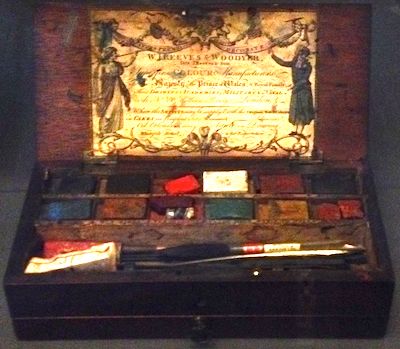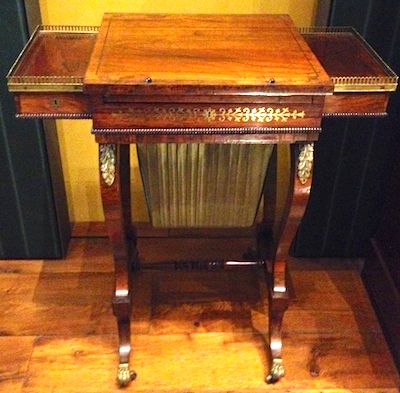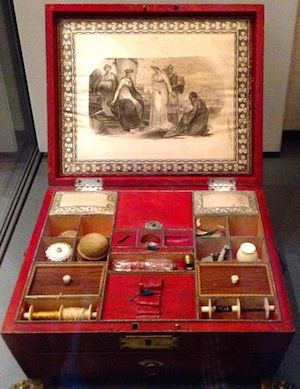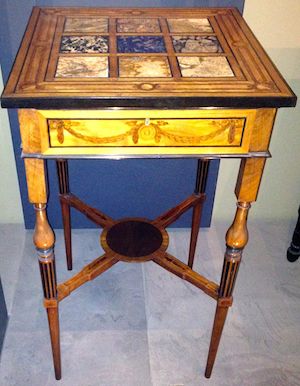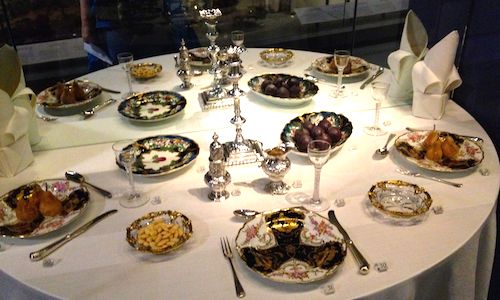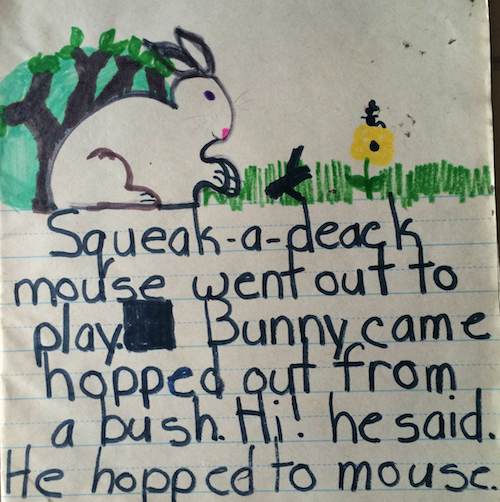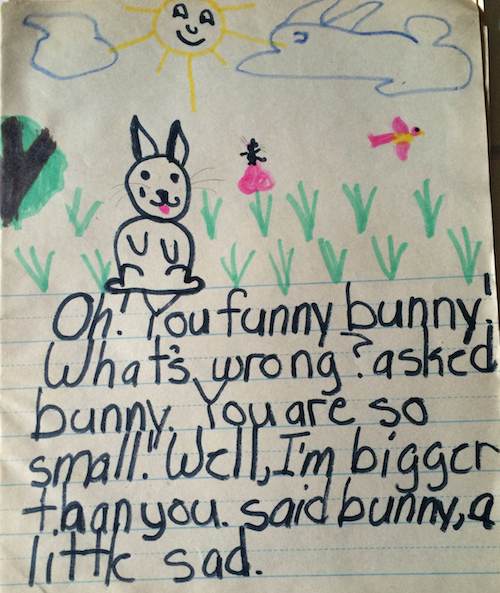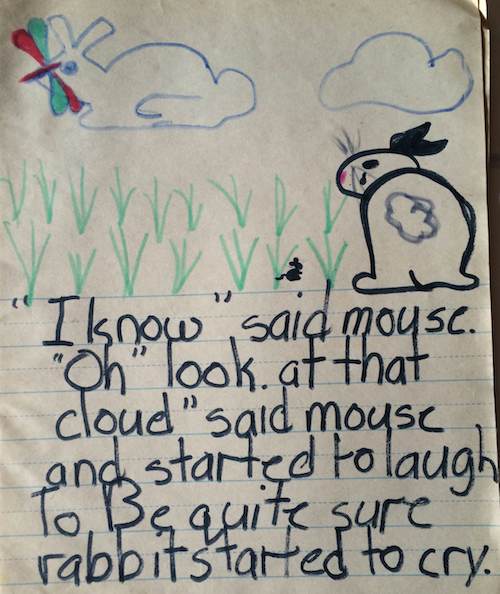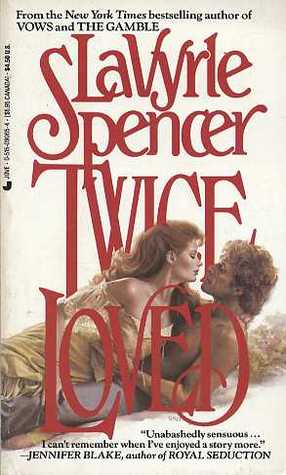Here for your enjoyment (or ridicule) is a story I wrote at age 9 to entertain my sister. Clearly my work ethic remains about the same – while the cover promises “and other stories,” I apparently wrote only one, and ended it in a hurry. Oh well. After 31 years, I’m turning over a new leaf, and a new page…
Who Are Your Favorite Romance Authors – Past and Present?
I started reading romance when I was ten years old (sorry, mom). Our local library sent a bookmobile down to the elementary school near us once a week, and one my favorite activities was browsing the kids’ books to find new reads. I quickly exhausted the selection, however–what was a bored bookworm to do?
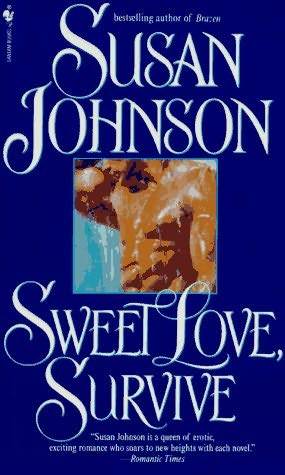 I turned around. To the adult section. Most of the titles didn’t interest me, but I found one book that had a gorgeous woman on it clad in a beautifully flowing emerald-green dress. My eyes soaked it in, and when I flipped it over to read something on the back about a pirate, I was hooked. I devoured that book in a day. It was my first romance. Sadly, I can’t remember the title or author, but I do remember it sparked a life-long love with the romance genre.
I turned around. To the adult section. Most of the titles didn’t interest me, but I found one book that had a gorgeous woman on it clad in a beautifully flowing emerald-green dress. My eyes soaked it in, and when I flipped it over to read something on the back about a pirate, I was hooked. I devoured that book in a day. It was my first romance. Sadly, I can’t remember the title or author, but I do remember it sparked a life-long love with the romance genre.
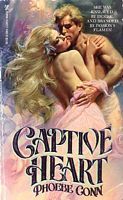 After reading through the small bookmobile romance collection, I started saving my allowance to buy romances at the local Waldenbooks in the mall. I think the first title I ever bought was by Phoebe Conn – but again, I don’t remember much else besides loving the book (oh, the many curses of a terrible long-term memory. Stupid brain.). Other romances quickly followed, whether borrowed or purchased: love stories by Constance O’Banyon, Constance O’Day Flannery (who introduced me to my beloved time-travel romances; man, I soaked those up!), Johanna Lindsey, Catherine Coulter.
After reading through the small bookmobile romance collection, I started saving my allowance to buy romances at the local Waldenbooks in the mall. I think the first title I ever bought was by Phoebe Conn – but again, I don’t remember much else besides loving the book (oh, the many curses of a terrible long-term memory. Stupid brain.). Other romances quickly followed, whether borrowed or purchased: love stories by Constance O’Banyon, Constance O’Day Flannery (who introduced me to my beloved time-travel romances; man, I soaked those up!), Johanna Lindsey, Catherine Coulter.
I found “older” romances and read Bertrice Small, Shirlee Busbee, Kathleen Woodiwiss. I couldn’t get enough, even as my peers and family mocked me for my genre of choice. “When I grow up,” I declared, “I’m going to write romances!” I was trying to legitimize my obsession in some ways through such a statement, but in the back of my mind the idea was always there: write, write, write.
In the late 80s I discovered one of my all-time favorites: LaVyrle Spencer. I LOVED (and still love) her books. I’d read an entire one in an afternoon. I read them over and over again. I couldn’t get enough. To her I added other new author loves, like Jude Devereaux (whose Knight in Shining Armor remains in my Top Five), Kristin Hannah, Elaine Coffman, Pamela Morsi, Dorothy Garlock. I hope I’m keeping the time frame right – forgive me if I’m off by five or so years.
I even bought romances in German when I lived in German in 1989. I have many of Johanna Lindsey’s books auf Deutsch, and even a LaVyrle Spencer one! And yes, I read them, too.
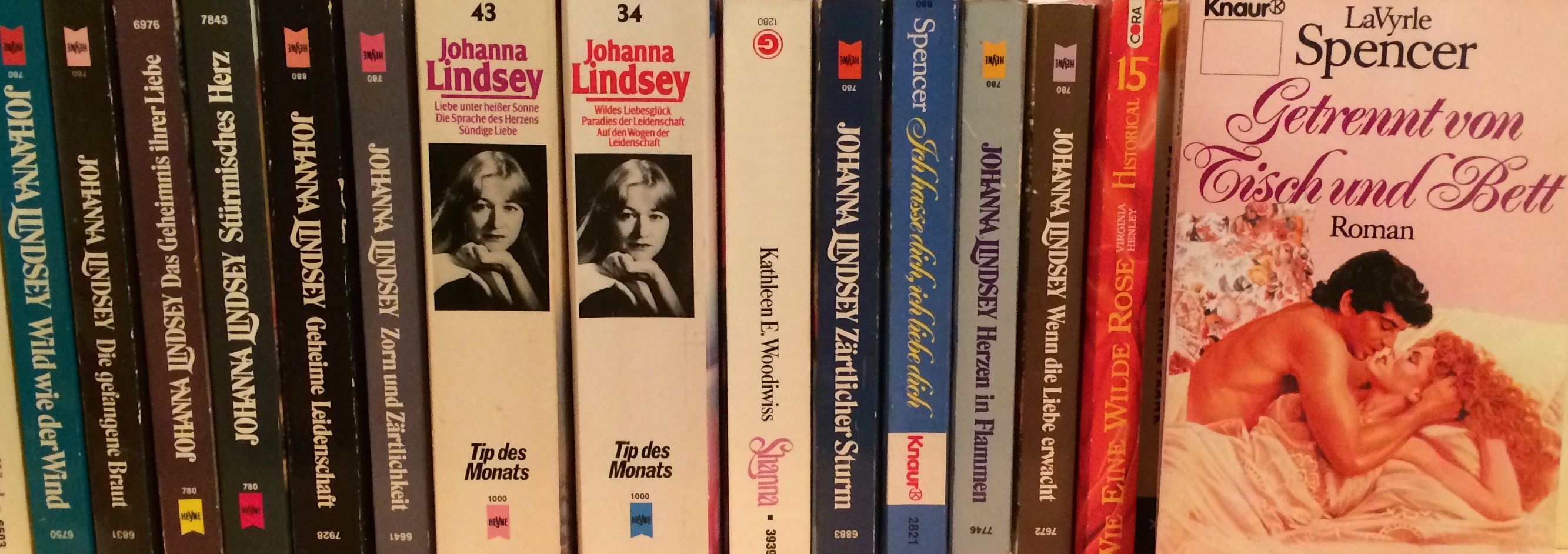
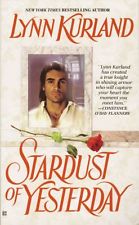 As I headed off to college, I took new favorites with me. Christina Dodd (maybe she was late 90s – again, faulty memory), Jane Feather, Susan Johnson, Laura Kinsale, Betina Krahn, Lisa Kleypas. Ah, Ms. Kleypas. I bought her debut novel. I was stunned to see we were around the same age. That again fueled the belief, the hope, that if she could write romance, so could I. Then I stumbled on to Lynn Kurland. Ah. Lynn Kurland. Another time-travel romance writer who wrote my favorite romance of all time, Stardust of Yesterday.
As I headed off to college, I took new favorites with me. Christina Dodd (maybe she was late 90s – again, faulty memory), Jane Feather, Susan Johnson, Laura Kinsale, Betina Krahn, Lisa Kleypas. Ah, Ms. Kleypas. I bought her debut novel. I was stunned to see we were around the same age. That again fueled the belief, the hope, that if she could write romance, so could I. Then I stumbled on to Lynn Kurland. Ah. Lynn Kurland. Another time-travel romance writer who wrote my favorite romance of all time, Stardust of Yesterday.
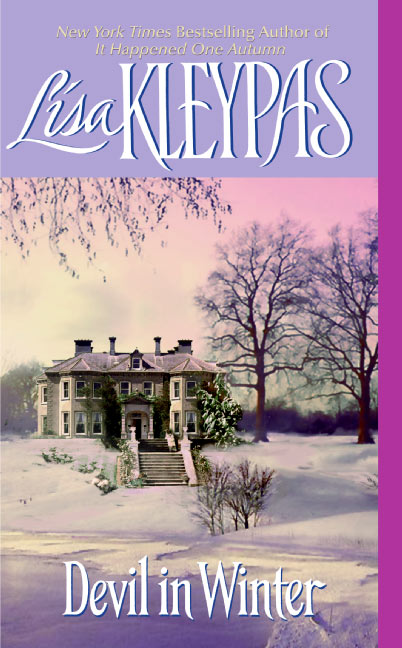 By this time, I was in graduate school. The goal was to obtain that doctorate in medieval history and land a professorship somewhere. Writing novels seemed so far removed from a viable choice that I didn’t think about it anymore. My novel collection dwindled, as well–after one particular ribbing from my family I boxed up all the books I had and donated them to the library. Score for the library, but oh, how I wish I still had them.
By this time, I was in graduate school. The goal was to obtain that doctorate in medieval history and land a professorship somewhere. Writing novels seemed so far removed from a viable choice that I didn’t think about it anymore. My novel collection dwindled, as well–after one particular ribbing from my family I boxed up all the books I had and donated them to the library. Score for the library, but oh, how I wish I still had them.
I did the same thing again in the early 2000s; I had gotten married and was now the mother to a young son, and somehow stopped reading romance. I mean completely stopped. Part of me, I think, felt as if a married mother shouldn’t be reading such books (not that my husband has ever cared). Off to the library they went, and I spent the early 2000s reading…I don’t know what. (Probably People magazine in five-minute increments in the bathroom while the toddlers banged on the door, or played on the floor.)
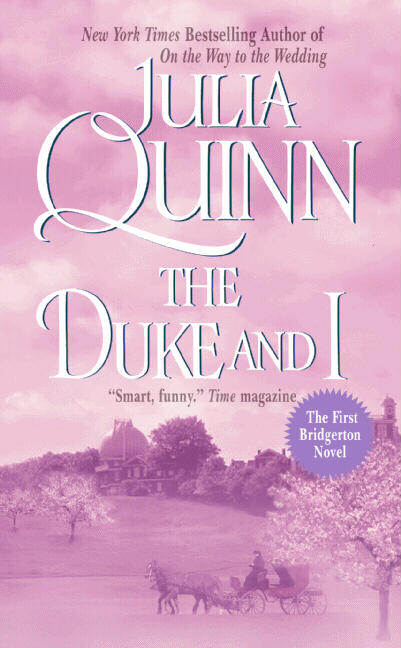 That is, until I stumbled across Julia Quinn‘s The Duke and I. And the love affair flamed anew, fast and furiously. I consumed her Bridgerton series as quickly as I could, then discovered Jo Goodman‘s Compass Club quartet, which was delicious. Next followed works by Eloisa James and Sabrina Jeffries–if you haven’t read them, you are missing out! Not only was I back in love with romance, but I’d found a whole new set of authors and a time period which enchanted me completely. In the past (and still some today) I read lots of medieval romances, American west romances (gotta love those sheriff and schoolmarm ones), some set in Russia, some in Europe. I loved them. I still do. But it’s the Regency which feeds my fantasies now, so most of the books I’m seeking out are set in that era.
That is, until I stumbled across Julia Quinn‘s The Duke and I. And the love affair flamed anew, fast and furiously. I consumed her Bridgerton series as quickly as I could, then discovered Jo Goodman‘s Compass Club quartet, which was delicious. Next followed works by Eloisa James and Sabrina Jeffries–if you haven’t read them, you are missing out! Not only was I back in love with romance, but I’d found a whole new set of authors and a time period which enchanted me completely. In the past (and still some today) I read lots of medieval romances, American west romances (gotta love those sheriff and schoolmarm ones), some set in Russia, some in Europe. I loved them. I still do. But it’s the Regency which feeds my fantasies now, so most of the books I’m seeking out are set in that era.
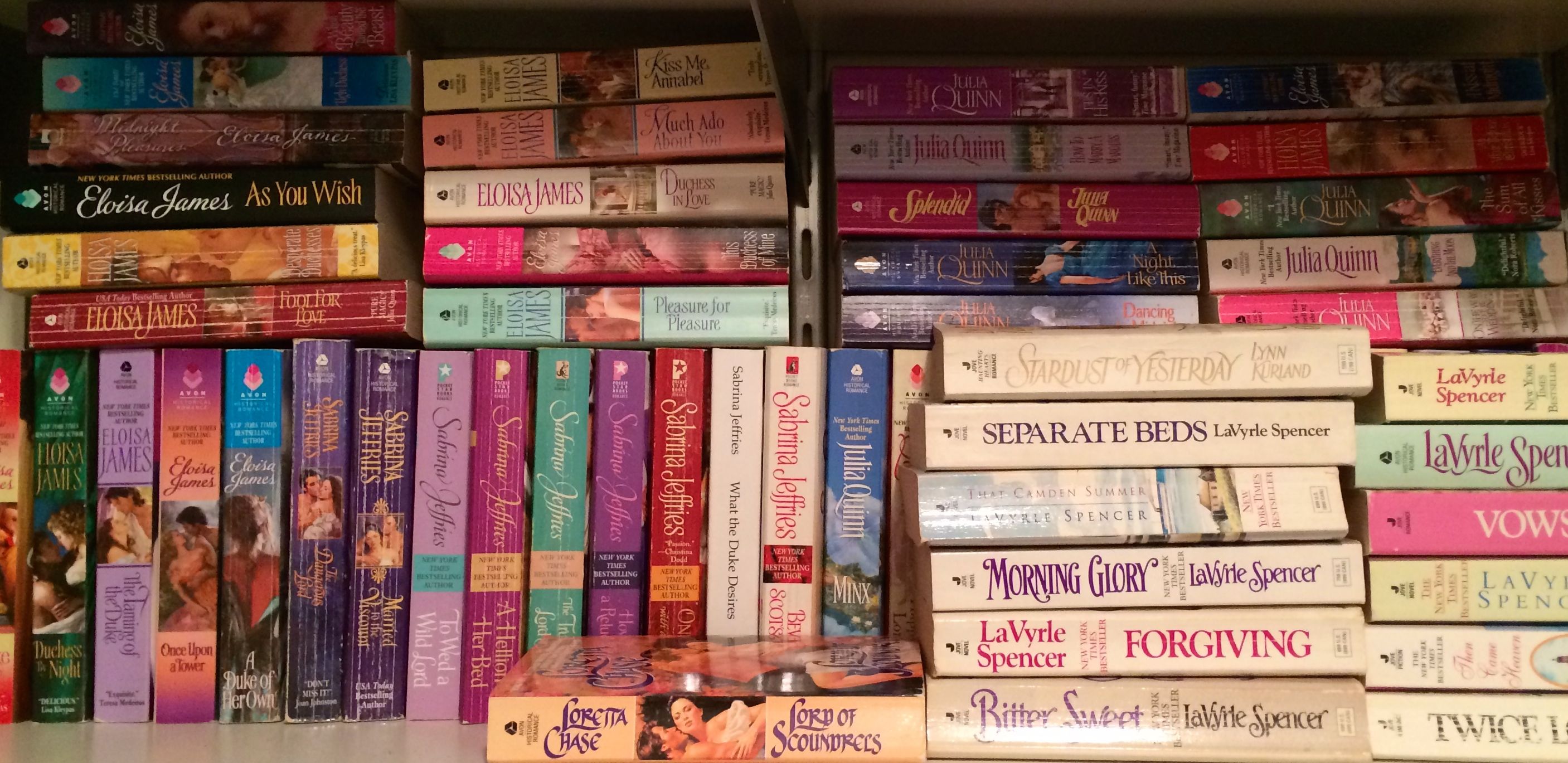
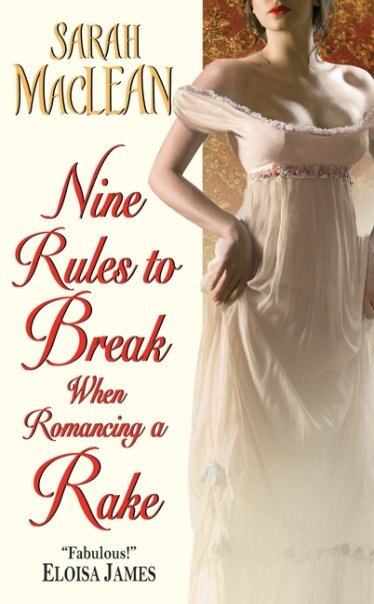 New discoveries are enriching my romance novel experiences, as well. I’ve fallen in love with Katy Regnery and her emotionally evocative yet simple writing style (even though she doesn’t write Regency!), and Sarah MacLean‘s Nine Rules to Break While Romancing a Rake has leapt into my Top Ten, I’m sure. I’ve a number of Tessa Dare and Erin Knightley books in my To Read pile, and I’m looking forward to them.
New discoveries are enriching my romance novel experiences, as well. I’ve fallen in love with Katy Regnery and her emotionally evocative yet simple writing style (even though she doesn’t write Regency!), and Sarah MacLean‘s Nine Rules to Break While Romancing a Rake has leapt into my Top Ten, I’m sure. I’ve a number of Tessa Dare and Erin Knightley books in my To Read pile, and I’m looking forward to them.
In truth, my To Read pile must number at least 100 books, if not more – and that’s not including the titles I’ve downloaded to my Kindle. Will I ever read them all? I don’t know, but it’s the kind of quandary I love to have.
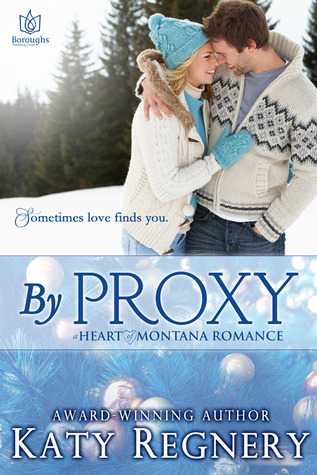 So there’s my recounting of the authors who’ve left indelible marks on my aging brain through the characters and stories they’ve brought to life. I’ve probably missed at least a few.
So there’s my recounting of the authors who’ve left indelible marks on my aging brain through the characters and stories they’ve brought to life. I’ve probably missed at least a few.
Now I’d love to hear from YOU. Who are your Can’t Miss authors, whether recent or classic?
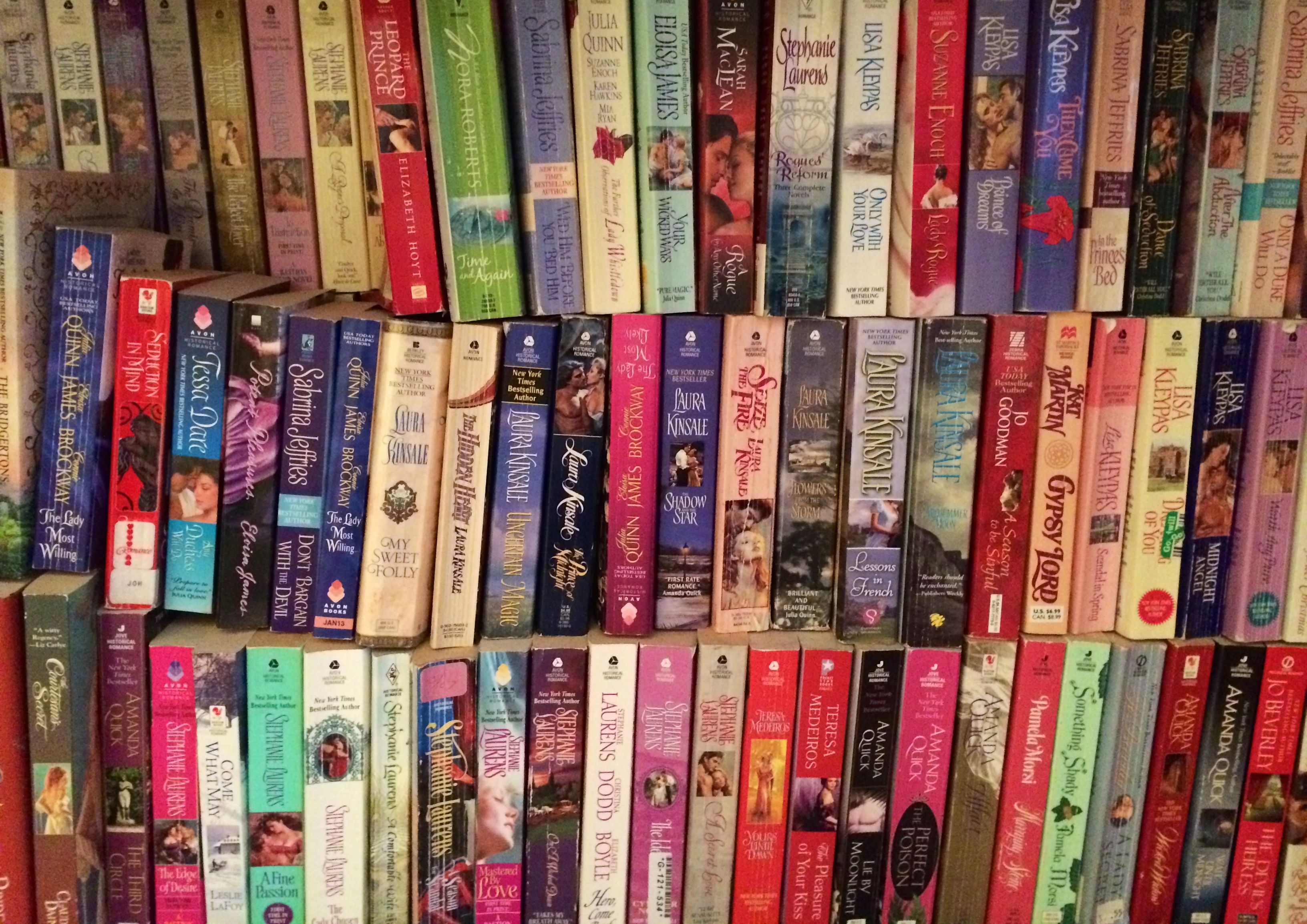
Flash Friday Fiction: A Burning Desire
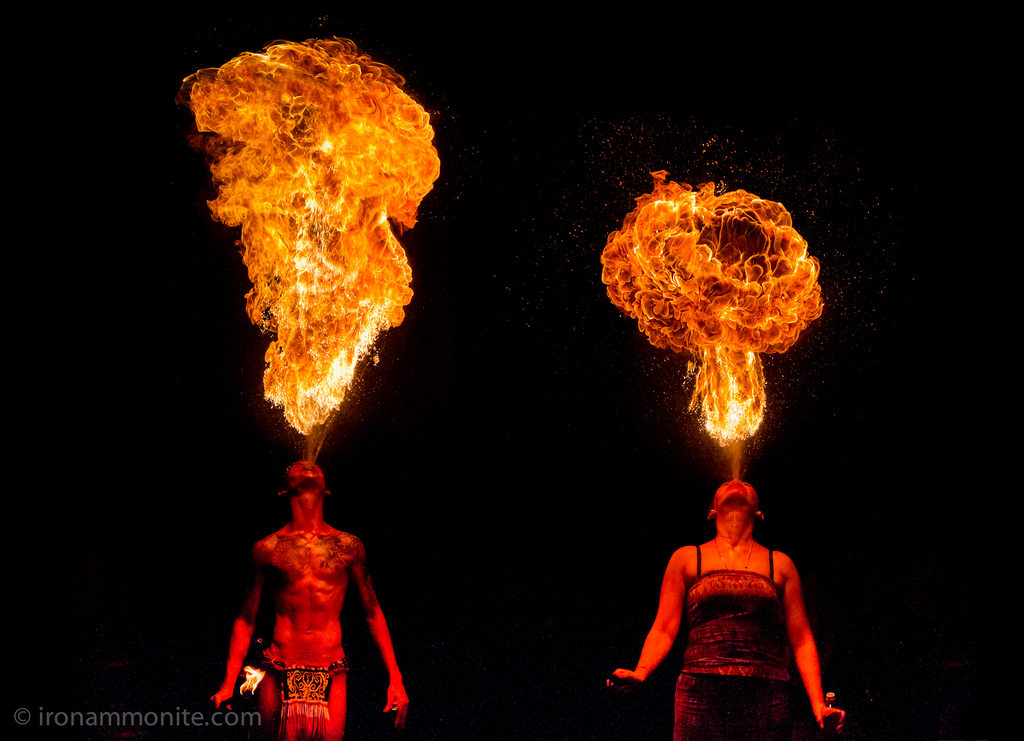
A Burning Desire – 156 words
“Just friends,” he insisted. He wasn’t ready for anything more, not after the last one.
I wanted to prove it to him, show him that I’d be there for him, show him that I would do anything for him. Not like her. She wouldn’t even eat Mexican food. Claimed it was too hot. Ha.
And so here I find myself, bursting into flames, although not the way I imagined. This is taking the spark of desire a bit too far, don’t you think?
On the other hand, did you SEE his abs?
I know I’m a little soft and squishy – not the type you’d think would do this. “Better suited for a desk job,” mom always said.
I’ll show her. I’ll show them all. I’m on fire for this man.
I just hope I don’t end up with a scalded spirit. Because Lord knows I’m going to have one hell of a case of heartburn.
———————————————
Sometimes I go serious with my FF entries. Other times the first thing that bubbles to the surface is snark. I went with it this week, enjoying the silliness and plays-on-words, with a dash of romance thrown in for fun. What do you think?
What would you write? There’s still time! Hop on over to Flash Friday Fiction and submit your story!
Query, Query, Quite Contrary: Adventures in Querying for a Literary Agent
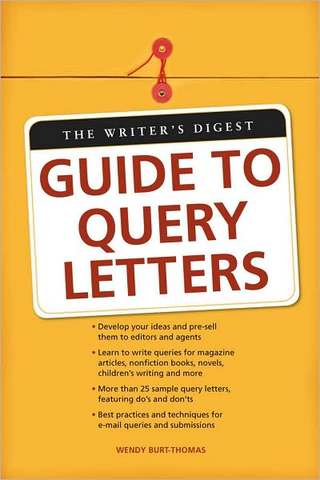 Yes, it has come to this. The agony and the ecstasy of the querying process. Agony, because trying to condense a book into a one or two paragraph pitch while still conveying voice, wit, action, and that all important hook is not for the faint of heart. Ecstasy because I’m actually pursuing this, actually putting myself out there rather than letting the ubiquitous anxiety hold me back, and maybe, just maybe, it will lead somewhere.
Yes, it has come to this. The agony and the ecstasy of the querying process. Agony, because trying to condense a book into a one or two paragraph pitch while still conveying voice, wit, action, and that all important hook is not for the faint of heart. Ecstasy because I’m actually pursuing this, actually putting myself out there rather than letting the ubiquitous anxiety hold me back, and maybe, just maybe, it will lead somewhere.
The number one piece of advice I read over and over as I began looking into this querying process? Research. Research, research, research.
With how much time we spend honing our novels, writing and editing draft after draft, does it really make sense to dash off a query without much thought, especially when said query is an agent’s or editor’s first introduction to you and your writing? Spend time on the query. Write multiple queries. Write multiple drafts of each query. Solicit feedback.
Not only does the query need significantly more attention that many newbies want to pay to it, but so do the people whom you plan to query. Compile a list of agents who represent the type of book you have written. Visit their websites and learn about them. Note what they are looking for, who they represent, and whether or not they’re even open to queries at the present time. Pay careful attention to the submission standards for each agency and/or agent, as they do vary.
I made a spreadsheet in which I’ve listed agent name, agency, agency contact information, submission requirements, authors they or their agency represent, query response time, date I queried them, etc. After I compiled this list of potential agents (currently numbering in the 40s), I started to read. And read. And read. Here’s a short list of sources I’ve consulted:
Books:
- Wendy Burt-Thomas: The Writer’s Digest Guide to Query Letters
- Noah Lukeman: How to Write a Great Query Letter (free Kindle download!) & How to Land and Keep a Literary Agent (free Kindle download!)
- Coleen O’Shea and Marilyn Allen: The Complete Idiot’s Guide to Book Proposals and Query Letters
Online resources:
- AgentQuery: A comprehensive site with articles on querying, as well as useful agent listings, although I noticed some agent information was occasionally outdated.
- Nathan Bransford (an author who provides clear, concise information on query letters): How to Write a Query Letter, The Basic Query Letter Formula, Examples of Good Query Letters, and How to Format a Query Letter:
- C.S. Lakin: The Right Way to Write a Query Letter
- Kristin Nelson’s Pub Rants – Kristin Nelson, literary agent at the Nelson Agency, publishes this informative blog, which, among many other topics, contains specific examples of queries she has liked, in which she explains what worked for her.
- Publisher’s Marketplace: A comprehensive directory of the publishing industry. Use it to search for agents; some have listings available for viewing even without a subscription
- QueryShark: Great website that dissects and devours potential query letters. I need to spend more time on this site reading the various analyses, but I admit it scares me a little.
- Writer’s Digest: Great resource for writers, with a special section devoted to successful query letters.
Once you’ve done your research and written the query letter of all query letters, the one you’re sure will land you instant representation, don’t just fire it off. Solicit feedback. I posted my query to both my Shenandoah Valley Writers Facebook group, to get the input of fellow writers, many of whom have been or are currently in the same place I am in this quest for publication, and also to my Facebook friends and relatives, figuring if it didn’t capture their attention, it wouldn’t capture an agent’s.
Finally I decided I was ready – or as ready as I was ever going to be. I sat down on April Fool’s Day (was that a harbinger?) and over the course of a few hours, carefully sent out five queries. Some were just the letter itself, others were accompanied by a synopsis or a few pages of writing: whatever the agent specifically wanted.
And I worried. I worried whether I had selected the right categorization for my novel. I fretted over whether I had chosen the best highlights for my book blurb, and whether I had a hook powerful enough to reel anybody in. I wondered if I should have mentioned my doctoral work in medieval history or Flash Friday adventures (and wins), even though all sources said don’t include qualifications not directly related to your writing, or that are considered minor. Bummer that.
I assumed it would weeks, if not months, before I heard anything. To my surprise, I got my first rejection – a form one – six hours later. By the evening of the next day, I had two more rejections in my inbox. I was stunned at the speed, considering most agents say it takes weeks or months to get back to you, if they respond at all. I still question if there’s a message in that: is my query and/or book so terrible they couldn’t say no fast enough?
Rejection Central
So here’s what I know: the basic odds of landing an agent and getting published are 1 in 100. At least that’s what YA authors presenting on publishing at my local library recently stated. These aren’t the best odds, but, if true, they also aren’t the worse. Apparently I’m much more likely to get a book traditionally published than I am to get hit by lightning (hooray!) or win the lottery (boo!) or even get attacked by a shark (unless one counts QueryShark).
I’m trying to keep that in mind, because in truth, I have very thin skin. It’s more like a bat’s wing’s than an alligator’s. Rejection is hard, man. Even when you know it’s coming. However, I’ve been inspired by another writer friend who, every time she gets a new rejection letter, announces she’s that much closer to success. Using that logic, I’m down to 1 in 97 odds, right?
Today I sent out three more queries, mostly to prove to myself I wasn’t going to quit. That’s eight out to the world. Now I wait. Because I also read that if you query 8-10 agents and nobody bites, meaning no one asks to see chapters or the whole manuscript, it’s a sign the query isn’t doing its job. If they do ask for material but then don’t pursue you, it means the book isn’t up to snuff. Don’t blow all your chances the first time out of the gate, many experts say: query in batches of 5-10 at a time so that you can modify and improve your query letter and/or materials based on any feedback you (or don’t) get.
While I’m waiting, I’m getting back to work on Book Two. Because, as I keep reading everywhere, writers write (read Chuck Wendig’s fantastic blog post on this). And I’m working to improve my BICHOK (Butt in Chair, Hands on Keyboard) track record – because without writing books, there’s no point in querying, right?
Whew. That’s all I’ve got, folks. Now I’d love to hear from you. Let me know if there are resources I’ve missed that I should consult, what ideas or approaches worked for you or didn’t work for you, or any other advice you have. Aspiring-for-publication writers want to know!
A Romance Writer Goes to London: Day 2 – The Victoria & Albert Museum (part 7 in a series)

We’re nearly getting to the point of Throwback Thursday status, since I’m chronicling a trip that took place nearly half a year ago. I’m good with that – it’s a joy to get to relive the experience through sharing it with you.
After checking out Westminster Abbey, I headed over to the gigantic Victoria & Albert Museum, which heralds itself the world’s greatest museum of art and design. I was excited to visit the Regency-related exhibits, to see household items one would have had in the Regency era (well, OK, ones which the wealthier folk would have possessed, I’m guessing).

It didn’t disappoint. The biggest challenge was trying to see everything in the couple of hours I had before I was due to meet up with the husband. I failed in that there is NO WAY one can take in everything this museum has to offer–even when your area of interest is relatively narrow–in such a short time. I was dismayed later to realize I had entirely missed the Regency era clothing in the fashion displays. Ratzy fratzy.
I lingered over the furniture, which didn’t surprise me. I’ve always loved furniture, particularly that made out of solid wood in classical styles. Gleaming cherry wood tables, beautiful oak chairs, mahogany trunks – oh yeah.

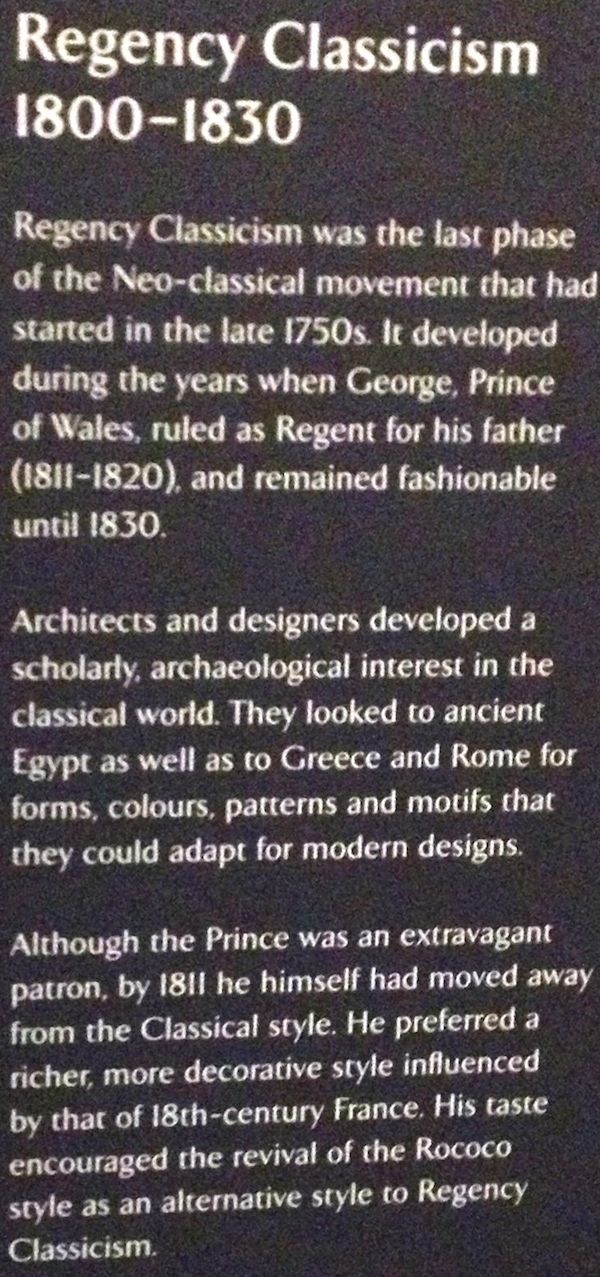 I also snapped pictures of several of the helpful description panels because hey, why not?
I also snapped pictures of several of the helpful description panels because hey, why not?
I made a mad dash through the silver exhibits before admitting foot exhaustion and mental overload and headed back down the road to the hotel. One bonus: I walked by Harrod’s! Never made it in, though…
I was grateful for a brief respite in the hotel before dragging my husband out for another Regency walk. Details on that coming up in the next exciting installment, tentatively entitled, “Wife Goes Into Tizzy Over Regency Buildings No Longer in Existence While Husband Becomes Convinced Wife Has Photographed Every Building In London.”
Until then…here are some additional photos from the day:




